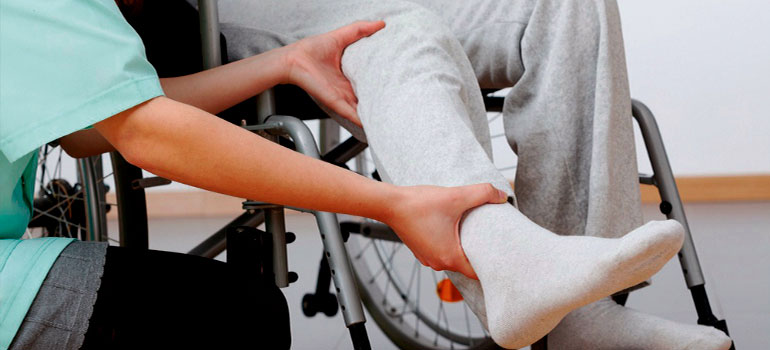Exercise is essential to the overall well-being of people from all walks of life and in all life stages. Stretching, cardio, resistance training, and sports each assist in the development and continual improvement of muscle tone, coordination, and day-to-day energy levels. Wheelchair users are no exception to this rule and many experience great benefits to introducing workouts to their daily lives.

The Benefits of Wheelchair-Based Exercise
With a little creativity, it is easy to adapt almost any exercise to use with a wheelchair. The benefits of doing so can include increased muscle tone, fitness, and general health.
Many wheelchair users find that working out relieves the digestive issues that are linked with wheelchair use, and can even improve posture and spinal stability. Exercise is also known to ease aches and pains and to increase endorphins in the body which create a sense of happiness and elevated mood.
Selecting Wheelchair-Based Exercises
When it comes to exercise, engagement and realistic goals are integral in keeping us motivated. Often, we can reach the end of our day having overlooked the opportunity to take part in exercise, but if you select an activity which appeals to you it's easy to sneak a workout into your routine. Exercise is also a wonderful way to harness a little creativity and sculpt a fun and stress-reducing activity to break up your day.
A great way to explore which kinds of activities to add to your regime is to write a list of exercises and sports which you enjoy, and think about how you could incorporate them into your day while keeping them fun and entertaining. You might like to enlist a friend to exercise with you, or even look into joining a local class or gym to carry out your workout in a more social setting.
Creating Your Workout Routine
When creating your exercise schedule, you should begin by asking yourself what the best wheelchair-based exercises are for you. This may include consulting with a physio or doctor to devise a plan that would most benefit your body. In fact, it is recommended to consult with a medical professional before beginning any exercise plan to ensure it is safe and suitable for you.
It's also important to think about how much time you will have each day or week to devote to your workout routine, and whether any costs that might be involved for equipment, memberships, or classes will be sustainable and within your budget.
Warming Up
Just as with any athlete, it is vital to warm up and cool down after exercise to lessen the impact and risk of pain and injury. Wheelchair exercise can pose a greater risk for arm and wrist injuries, and this can be lessened by warming up and stretching.
Types of Exercise
Strength and Exercise
Many people begin their exercise journey using light weights or muscle-building workouts. These exercises help to strengthen the arms and core muscles, which are important for effective wheelchair use.
Wheelchair push-ups are a great example of a strength-building exercise. To complete a wheelchair push-up, you place your hands to the side of your body and lift your body upwards out of the seat of the wheelchair.
Aerobic and Cardio
The main goal of cardio is to raise your heart rate and get your blood pumping! This improves not only your fitness, but also your cardiovascular health. There are many varieties of cardio exercise, including wheelchair basketball and even dancing. Team sports are a great way to combine getting your cardio workout, keeping active, and being social into one activity. No matter the version of cardio you choose, it is important to keep it fun and interesting in order to maintain your motivation.
Flexibility, Focus, and Relaxation
Alongside cardio and strength training, it's also important to keep those muscles flexible and limber. Exercises such as Pilates and wheelchair yoga not only improve and maintain flexibility and strength, but are reported to improve concentration and overall well-being.
You don't always need to get your blood pumping for exercise to be beneficial, and there are many calming and fun varieties of yoga to try in your wheelchair either alone, with friends, or even in a class.
Most of the stories here on Live Quickie were submitted by readers. Do you have a story to tell? We'd love to hear it. Submit your story here.